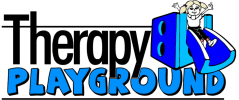What is toe walking?
Toe walking is when a child walks, you guessed it, up on their tip toes or the ball of their foot a large majority of the time. This is common in new walkers and children with diagnoses such as Autism Spectrum Disorder or Cerebral Palsy, for example.
When is it a cause for concern?
Toe walking is a cause for concern when your child walks up on their toes a large percentage of the time, and is over 2 years old or has been walking independently for about 6 months. Other signs it may be appropriate to bring your child in for a physical therapy evaluation are balance issues, having limited range of motion in their ankles specifically when bringing their toes towards their shins, your child is complaining of pain in their legs, or they are having trouble participating in gross motor activities with their peers.
Why is it an issue?
Persistent toe walking that goes untreated can cause ankle contractures, shortened calf muscles, pain, skeletal changes, increased ankle injuries, decreased participation in play with peers, and increased incidence of injury into adulthood. But don’t worry, physical therapy intervention can help!
What if my doctor tells me to wait it out?
Some doctors may suggest waiting it out to see if your child stops toe walking on their own as older scientific literature suggests that toe walking is typical in 1-3 year olds, but newer evidence suggests that this is not the case. As gross motor experts, a physical therapist will be able to determine during an evaluation if your child has any other gross motor concerns and if physical therapy intervention is appropriate.
What causes toe walking?
Toe walking could be sensory related or caused by muscle tightness, or the cause could be unknown.
What will my therapist do to treat toe walking?
Your therapist will address any gross motor concerns, and incorporate a variety of treatment strategies to discourage toe walking. Typically stretching is involved as well as a variety of activities that encourage your child to shift their weight backwards onto their heels, strengthen their core, and improve balance. Your therapist may also recommend an orthotic consult.
What should I be doing at home?
Your therapist will be able to give you a specific home exercise program for your child, but overall beneficial activities to perform at home are bear walks, crab walks, heel walking, wall squats, supermans, and most importantly calf stretching. Encouraging your child to participate in their home exercise program is a large component to ensuring a lasting positive outcome from therapy services!
